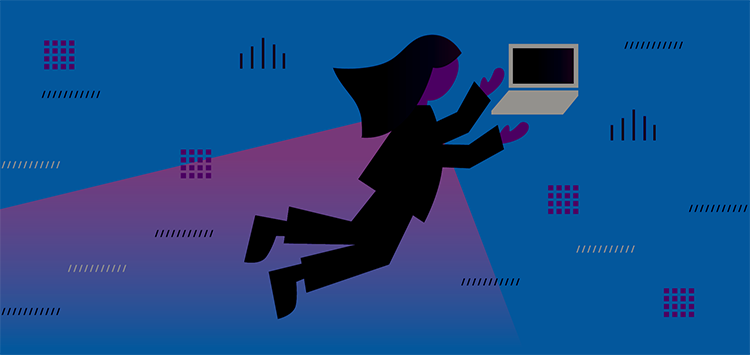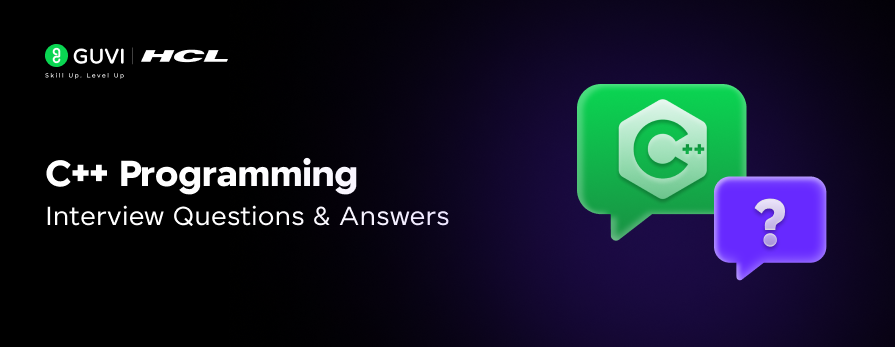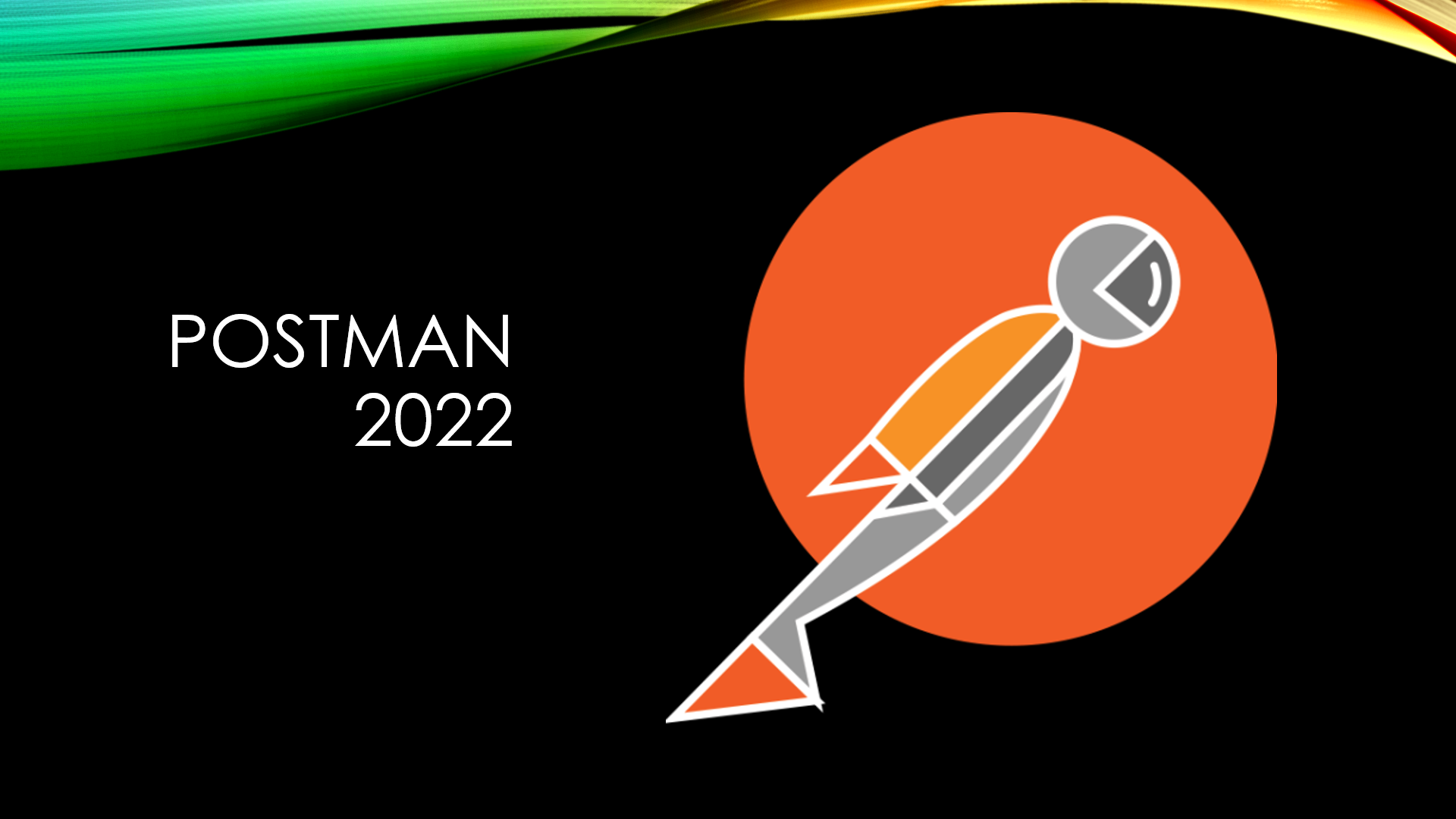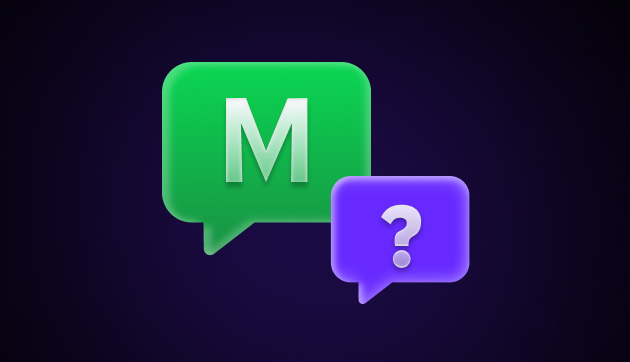
Top 40+ Golang Interview Questions and Answers
Jan 09, 2025 8 Min Read 3156 Views
(Last Updated)
Getting ready for technical interviews can be tough, particularly when you’re preparing for a Golang role. More companies now use Go for their backend development, and they just need skilled Golang developers.
I’ve put together a detailed list of golang interview questions and answers to help you prepare better. This list gives you the knowledge of everything from simple concepts to advanced topics that will get you ready for your next Golang interview. The content works well for beginners trying to land their first Go developer role or experienced programmers looking at senior positions.
You’ll find 40+ carefully picked questions in this piece. These are organized into beginner, intermediate, and advanced levels. Each answer has clear explanations and practical examples to give you a full picture of the concepts.
Table of contents
- Top Golang Interview Questions and Answers (Section-Wise)
- Beginner Level Golang Interview Questions and Answers (The Basics)
- Intermediate Level Golang Interview Questions and Answers
- Advanced Level Golang Interview Questions and Answers
- Concluding Thoughts…
Top Golang Interview Questions and Answers (Section-Wise)
I have divided all these important Golang interview questions and answers into various sections for your ease of learning, I recommend covering the beginner level questions as a must and then going through all the sections one by one so that you can gain a well-rounded knowledge of how these interviews are undertaken and how much and what you should prepare.

Beginner Level Golang Interview Questions and Answers (The Basics)
Let’s tuck into the essential Golang interview questions that beginners need to know. We’ll start with simple concepts and progress toward more detailed topics.
Question 1: What is Go programming language and what makes it unique?
Go (or Golang) is a general-purpose programming language that Google developed. The language stands out because it emphasizes simplicity and efficiency. Here’s what makes Go special:
The language delivers high performance and handles parallel tasks efficiently. Go provides built-in support for concurrent programming with a simple, concise syntax. You’ll find static typing with garbage collection that makes development smoother.
Question 2: How do you declare variables in Go? Explain different methods.
Go offers several ways to declare variables:
// Using var keyword
var age int = 20
// Short declaration with type inference
name := "Roger"
// Multiple variable declaration
var x, y = 10, "hello"Question 3: What are the basic data types in Go?
Go comes with several built-in data types:
| Category | Types |
| Numeric | int, int8/16/32/64, uint8/16/32/64, float32/64 |
| String | string |
| Boolean | bool |
| Complex | complex64, complex128 |
Question 4: What is a package in Go and why is it important?
A package groups Go source files in the same directory that compiles together. Packages serve multiple purposes. They manage dependencies effectively and organize code logically. Your code becomes reusable, and you get better scope control for variables and functions.
Question 5: How does Go handle strings? What are string literals?
Strings in Go work as immutable sequences of bytes. The language supports two types of string literals:
// Raw string literal (using backticks)
raw := `Hello\nWorld`
// Interpreted string literal (using double quotes)
interpreted := "Hello\nWorld"Question 6: What are slices in Go and how do they differ from arrays?
Slices function as dynamic, flexible views of arrays. Unlike arrays with fixed sizes, slices can grow. Here’s a clear example:
// Array declaration (fixed size)
array := [3]int{1, 2, 3}
// Slice declaration (dynamic size)
slice := []int{1, 2, 3}
slice = append(slice, 4) // Can be expandedQuestion 7: How does Go implement error handling?
Go takes a straightforward approach to error handling through explicit error values instead of exceptions. Functions typically return an error as their last value:
func divide(x, y float64) (float64, error) {
if y == 0 {
return 0, errors.New("division by zero")
}
return x/y, nil
}Question 8: What is the purpose of the ‘defer’ statement in Go?
The defer statement delays a function’s execution until the surrounding function finishes. This works great for cleanup operations:
func processFile() {
file := openFile()
defer file.Close() // Will be executed when function returns
// Process file here
}Question 9: How do you create and use maps in Go?
Maps store key-value pairs in Go. Here’s a straightforward way to create and use them:
// Create a map
ages := make(map[string]int)
// Add elements
ages["Alice"] = 25
ages["Bob"] = 30Question 10: What is the significance of the ‘main’ package in Go?
The main package holds special importance in Go. It defines a standalone executable program and must contain a main() function that serves as the program’s entry point.
Question 11: How does Go support concurrency at the language level?
Go excels at concurrency through its built-in support with goroutines and channels. A goroutine runs as a lightweight thread that the Go runtime manages:
go functionName() // Starts a new goroutineQuestion 12: What are interfaces in Go and how are they implemented?
Interfaces define a set of method signatures in Go. Types implement interfaces implicitly by providing definitions for all interface methods. This approach enables powerful abstraction and polymorphism in your Go programs.
Intermediate Level Golang Interview Questions and Answers
Let’s dive into some intermediate-level Golang interview questions and answers that will enhance your understanding of Go’s powerful features.
Question 13: What are Go Interfaces and why are they important?
Go interfaces specify an object’s behavior. They create abstractions that multiple types can implement. Here’s a practical example:
type Area interface {
calculateArea() float64
}
type Rectangle struct {
width, height float64
}
func (r Rectangle) calculateArea() float64 {
return r.width * r.height
}Question 14: How do you declare multiple variables in a single line of Go code?
Multiple variables can be declared using the short declaration syntax or the var keyword:
// Using short declaration
a, b := 1, 2
// Using var keyword
var x, y, z intQuestion 15: What is a Rune in Go and when should we use it?
A rune represents a single Unicode code point and serves as an alias for int32. Runes come in handy while working with individual characters, particularly in Unicode strings:
str := "hello"
runeSlice := []rune(str)Question 16: Explain Go’s map data type and its operations
Maps are key-value pairs that offer quick lookups. Here are the core operations:
// Creation
m := make(map[string]int)
// Writing
m["key"] = 1
// Reading with existence check
value, exists := m["key"]
// Deletion
delete(m, "key")Question 17: What are channels and how do they aid communication between goroutines?
Channels act as typed conduits that allow goroutines to communicate and synchronize their execution:
ch := make(chan int)
go func() {
ch <- 42 // Send value
}()
value := <-ch // Receive valueQuestion 18: What’s the difference between arrays and slices in Go?
Arrays and slices differ in several aspects:
| Feature | Array | Slice |
| Definition | Fixed-length collection of elements. | Dynamic, resizable view of an array. |
| Size | Size is defined at compile time and cannot change. | Can grow or shrink dynamically. |
| Declaration | var a [3]int | var s []int or s := make([]int, len, cap) |
| Underlying Data | Directly stores elements. | References an array, enabling flexible operations. |
| Memory Allocation | Allocates memory upfront for all elements. | Allocates memory as needed for dynamic resizing. |
| Length (len) | Returns the total number of elements. | Returns the current number of elements in the slice. |
| Capacity (cap) | N/A (fixed size). | Total space in the underlying array (dynamic). |
| Copy Behavior | Copies the entire array by value. | Copies references; modifying affects the same data. |
| Usage | Used for fixed-size collections. | Preferred for dynamic lists and flexible operations. |
| Default Initialization | Elements are initialized with zero values. | nil by default if uninitialized. |
Question 19: Can we resize arrays in Go?
Arrays in Go maintain a fixed size. Slices provide a dynamic alternative for resizable sequences by offering a dynamic view into an underlying array.
Question 20: What is a slice in Go and how does it work internally?
A slice references a contiguous segment of an array. Its structure includes:
- A pointer to the array
- The segment’s length
- The capacity (maximum length)
Master Golang with GUVI’s Golang Course, designed to help you build robust applications and ace Golang interviews! Learn core concepts, real-world applications, and essential tools like Go Modules, Goroutines, and Channels. Get hands-on practice, interview prep, and lifetime access to industry-relevant content. Perfect for aspiring developers!
Question 21: How do you convert between numeric types in Go?
Numeric type conversion requires explicit casting:
var i int = 42
var f float64 = float64(i)Question 22: What are function literals in Go?
Function literals (anonymous functions) can be assigned to variables or passed as arguments:
add := func(a, b int) int {
return a + b
}Question 23: Explain variadic functions in Go
Variadic functions accept a variable number of arguments through an ellipsis (…):
func sum(nums ...int) int {
total := 0
for _, num := range nums {
total += num
}
return total
}Question 24: When should we use variadic functions?
Variadic functions prove useful when:
- Input numbers remain unknown
- A flexible API becomes necessary
- Slice operations need handling
Question 25: What is the iota keyword and how is it used?
The iota keyword creates a sequence of related constants, making it perfect for enums:
const (
Sunday = iota // 0
Monday // 1
Tuesday // 2
)Question 26: What are receiver functions in Go?
Receiver functions attach methods to a type to implement object-oriented behavior:
type Circle struct {
radius float64
}
func (c Circle) Area() float64 {
return 3.14 * c.radius * c.radius
}Advanced Level Golang Interview Questions and Answers
Let’s dive into advanced Go programming concepts that distinguish senior developers from others. These questions will test your deep knowledge of Go’s powerful features and best practices.
Question 27: What’s the difference between buffered and unbuffered channels in Go?
The main distinction lies in message storage. Buffered channels store messages up to a set capacity, while unbuffered channels need an immediate receiver:
// Buffered channel
buffered := make(chan int, 2)
// Unbuffered channel
unbuffered := make(chan int)Question 28: How does pointer dereferencing work in Go?
Pointer dereferencing allows access to data stored at a specific memory address:
value := 42
ptr := &value
fmt.Println(*ptr) // Dereferencing to get valueQuestion 29: What are the best practices for error handling in Go?
The core principles include:
- Creating descriptive error messages
- Adding context by wrapping errors
- Explicit error checks
- Normal error flows should not use panic/recover
Question 30: Explain the concept of mutex in Go and when to use it.
Mutex protects shared resources in concurrent programs:
var mu sync.Mutex
mu.Lock()
// Critical section
mu.Unlock()Question 31: What is the difference between GOROOT and GOPATH?
GOROOT and GOPATH are key environment variables in Go, but they serve distinct purposes in Go’s ecosystem.
GOROOT
- Purpose: GOROOT points to the directory where Go is installed. It contains the Go compiler, tools, and the standard library source code.
- Default Location: By default, GOROOT is set automatically during Go installation (e.g., /usr/local/go on Unix systems or C:\Go on Windows).
- Custom Configuration: Changing GOROOT is rare unless using a custom Go installation. It is generally managed by the Go runtime itself.
- Role: It enables Go to locate its core binaries and libraries, making it essential for the language to function properly.
GOPATH
- Purpose: GOPATH defines the workspace directory where your Go projects and dependencies reside. It traditionally contains:
- src: Source code for projects and dependencies.
- pkg: Compiled packages for reuse.
- bin: Compiled binaries for executable programs.
- Default Location: By default, it is set to $HOME/go (or %USERPROFILE%\go on Windows). You can override it by setting the GOPATH environment variable.
- Role: Prior to Go modules (introduced in Go 1.11), GOPATH was central to Go development. All projects and dependencies had to be located within the GOPATH directory.
Key Differences:
- GOROOT is for Go’s internal tools and libraries, while GOPATH is for user projects and their dependencies.
- GOROOT is predefined and critical for Go’s operation, whereas GOPATH is optional with the use of Go modules (modern dependency management).
- With Go modules, GOPATH is no longer required as projects can reside anywhere, but it’s still used for storing the global module cache.
Since the introduction of modules, GOPATH is mostly used for backward compatibility and caching module dependencies. GOROOT remains crucial for Go’s functionality regardless of module usage.
Question 32: How do you implement microservices in Go?
To implement microservices in Go:
- Framework: Use frameworks like Gin or Fiber for REST APIs or gRPC for communication.
- Service Design: Define service boundaries and use decentralized databases.
- Middleware: Add logging, authentication (e.g., JWT), and rate-limiting middleware.
- Communication: Use HTTP clients, gRPC, or message brokers (Kafka/RabbitMQ).
- Containerization: Write Dockerfiles for each service.
- Orchestration: Deploy using Kubernetes or Docker Compose.
- Monitoring: Integrate tools like Prometheus and Jaeger for metrics and tracing.
Question 33: What are the common design patterns in Go?
1. Singleton:
Purpose: Ensures a class has only one instance and provides a global access point.
Implementation: Achieved using sync.Once in Go.
var instance *Singleton
var once sync.Once
func GetInstance() *Singleton {
once.Do(func() {
instance = &Singleton{}
})
return instance
}2. Factory:
Purpose: Creates objects without specifying the exact class.
Implementation: Use functions to return different types based on parameters.
func NewAnimal(t string) Animal {
switch t {
case "dog":
return &Dog{}
case "cat":
return &Cat{}
default:
return nil
}
}3. Observer:
Purpose: A subject notifies its observers of state changes.
Implementation: Use slices of callback functions or channels.
type Observer func(data string)4. Decorator:
Purpose: Add functionality to an object dynamically.
Implementation: Use functions as wrappers.
func WithLogging(fn func()) func() {
return func() {
fmt.Println("Before function")
fn()
fmt.Println("After function")
}
}5. Strategy:
Purpose: Encapsulates algorithms within interchangeable objects.
Implementation: Use interfaces and switch at runtime.
type PaymentStrategy interface {
Pay(amount int)
}Question 34: How can you stop a goroutine after spawning it?
A goroutine can be stopped through:
1. Using a context.
Context: Pass a context with cancellation to the goroutine. When canceled, the goroutine stops.
ctx, cancel := context.WithCancel(context.Background())
go func(ctx context.Context) {
for {
select {
case <-ctx.Done():
fmt.Println("Goroutine stopped")
return
default:
// Do work
}
}
}(ctx)
cancel() // Stops the goroutine2. Using a channel: Signal the goroutine to exit by closing or sending to a channel.
stop := make(chan struct{})
go func(stop chan struct{}) {
for {
select {
case <-stop:
fmt.Println("Goroutine stopped")
return
default:
// Do work
}
}
}(stop)
close(stop) // Stops the goroutine3. Using a sync.WaitGroup: Combine with context or channels to gracefully stop after completing tasks.
Key Points:
- Goroutines don’t have a direct kill mechanism; rely on cooperative cancellation.
- Proper use of context or channels ensures graceful resource cleanup and prevents leaks.
Question 35: What is type assertion in Go and when should we use it?
Type assertion helps access the concrete type of an interface:
value, ok := interfaceValue.(Type)
if ok {
// Type assertion succeeded
}Question 36: How do you optimize Go programs for performance?
To optimize Go programs:
- Profiling: Use pprof or trace to identify bottlenecks in CPU, memory, and goroutines.
- Efficient Goroutines: Limit the number of goroutines to prevent high memory usage and context-switching overhead.
- Avoid Reflection: Reflection is slower and less type-safe; avoid it when performance matters.
- String Handling: Use strings.Builder for efficient string concatenation.
- Memory Management: Use slices instead of arrays for dynamic memory usage, and preallocate slices/maps when possible.
- Parallelism: Use goroutines and channels effectively for parallel processing, avoiding contention by leveraging worker pools.
- Avoid Copying Data: Pass pointers or references instead of copying large data structures.
- Garbage Collection (GC): Minimize heap allocations to reduce GC pressure.
Question 37: What is the purpose of the sync.Pool in Go?
sync.Pool caches allocated but unused items to reduce garbage collection pressure:
pool := &sync.Pool{
New: func() interface{} {
return make([]byte, 1024)
},
}Question 38: How do you handle data persistence in Go microservices?
- Database Interaction: Use libraries like gorm, sqlx, or the standard database/sql package for database operations.
- Transactions: Manage transactions with ACID properties to ensure data consistency.
- ORM/Query Builders: Use ORM frameworks like GORM for complex schemas and raw SQL for high performance.
- Caching: Employ caching strategies (e.g., Redis) to reduce database load.
- Connection Pooling: Use connection pools like database/sql to optimize database connections.
- Backup and Recovery: Integrate tools for data backup and recovery.
- Data Validation: Perform input validation to maintain data integrity before persistence.
Question 39: Can you read from a closed channel? Explain the behavior.
Yes, you can read from a closed channel, but only until it is empty.
When reading from a closed channel:
- If the channel contains data, you receive the data until the channel is empty.
- Once the channel is empty and closed, further reads return the zero value of the channel’s type without blocking.
Example:
ch := make(chan int, 2)
ch <- 1
ch <- 2
close(ch)
for val := range ch {
fmt.Println(val) // Outputs: 1, 2
}Question 40: What are empty structs used for in Go?
- Memory Optimization: An empty struct (struct{}) takes zero bytes of memory, making it efficient for scenarios where no actual data is needed.
- Signaling: Used in channels to indicate events without data payload (e.g., a done signal).
- Set Implementation: As map keys to mimic a set-like structure (map[string]struct{}).
- Placeholder: Placeholder for type constraints in generics or interface implementations.
Example:
set := make(map[string]struct{})
set["key1"] = struct{}{}
if _, exists := set["key1"]; exists {
fmt.Println("key1 exists in the set")
}Question 41: How do you implement the Singleton pattern in Go?
type singleton struct{}
var instance *singleton
var once sync.Once
func getInstance() *singleton {
once.Do(func() {
instance = &singleton{}
})
return instance
}Question 42: What’s the difference between lvalue and rvalue in Go?
lvalue (location value):
- Represents an object that occupies identifiable memory (e.g., variables, pointers).
- It can appear on the left-hand side of an assignment.
- Example: x = 10 → x is the lvalue.
rvalue (right value):
- Represents the value assigned to an lvalue, typically literals or temporary results.
- It can only appear on the right-hand side of an assignment.
- Example: x = 10 → 10 is the rvalue.
In Go:
- Go variables are lvalues because they have an address.
- Literals (42, “hello”) and expressions (x + y) are rvalues as they do not have a persistent address.
Question 43: How do you handle distributed tracing in Go microservices?
Distributed Tracing is critical for understanding request flow in microservices. In Go:
- Use Libraries/Frameworks:
- OpenTelemetry (OTel): A popular observability framework.
- Jaeger, Zipkin: Integrations with trace backends.
- Inject and Propagate Context:
- Pass context.Context through function calls to retain trace information.
- Example: Attach trace IDs and span data to context.Context.
- Instrument Your Code:
- Annotate significant operations or HTTP calls using span creation APIs.
Example:
ctx, span := tracer.Start(ctx, "operation-name")
defer span.End()- Middleware for Tracing:
- Use middleware in frameworks like net/http or gin to automatically capture incoming requests and propagate headers (e.g., traceparent).
- Export Traces:
- Use exporters (e.g., OpenTelemetry SDK) to send data to systems like Prometheus, Jaeger, or Datadog.
Question 44: What are the best practices for testing in Go?
- Organize Tests Effectively:
- Place tests in _test.go files.
- Use testing package: Write unit tests with t.Run for subtests.
- Write Table-Driven Tests:
- Useful for testing multiple input-output scenarios.
Example:
func TestAdd(t *testing.T) {
cases := []struct {
name string
input1 int
input2 int
want int
}{
{"positive numbers", 2, 3, 5},
{"negative numbers", -1, -1, -2},
}
for _, c := range cases {
t.Run(c.name, func(t *testing.T) {
got := Add(c.input1, c.input2)
if got != c.want {
t.Errorf("Add(%d, %d) = %d; want %d", c.input1, c.input2, got, c.want)
}
})
}
}- Use Mocks for Dependencies:
- Use libraries like gomock or testify for mocking external services.
- Benchmarking:
- Use testing.B for performance benchmarks.
Example:
func BenchmarkAdd(b *testing.B) {
for i := 0; i < b.N; i++ {
Add(2, 3)
}
}- Test Coverage:
- Aim for high test coverage (go test -cover), but ensure meaningful tests rather than chasing 100%.
- Lint and Static Analysis:
- Use tools like golangci-lint to ensure code quality.
- Run Tests in Isolation:
- Avoid shared state; tests should be independent.
- Leverage Integration Testing:
- Use tools like Docker to spin up real dependencies (e.g., databases, APIs).
Concluding Thoughts…
Your chances of success in technical interviews will improve by a lot when you become skilled at these Golang interview questions. Knowledge of every concept we’ve covered helps Go developers at different experience levels – from simple variable declarations to advanced microservices implementation.
Note that deep understanding of these concepts matters more than memorizing answers. You should practice these solutions in your own code. This is particularly true for concurrent programming patterns and error-handling approaches that make Go unique.
Start with the simple concepts, move through intermediate topics, and push yourself with advanced challenges. If you have doubts about any of these questions or the article itself, reach out to us in the comments section below.






















![Top React Interview Questions and Answers! [Updated] 4 React Interview Questions](https://www.guvi.in/blog/wp-content/uploads/2022/01/Top-React-Interview-Questions-and-Answers.webp)






![100 Commonly Asked Interview Questions for Java Developer Roles [Freshers] 10 Interview Questions for Java Developer Roles](https://www.guvi.in/blog/wp-content/uploads/2024/10/Heres-a-list-of-100-commonly-asked-interview-questions-for-freshers-aiming-for-Java-developer-roles.png)

Did you enjoy this article?